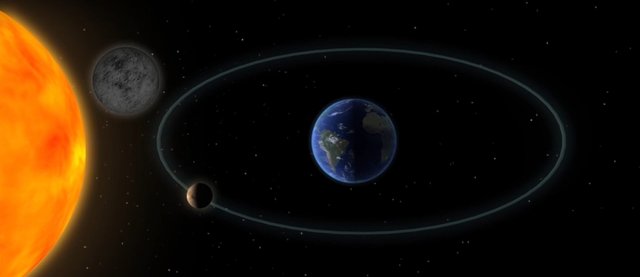Yellow Moon
The moon has long been an object of human interest, both in the world of science, space exploration, and popular culture. Since the Apollo 11 mission successfully landed on its surface in 1969, the idea of making the Moon a place for humans to live has been an interesting topic. However, is lunar exploration really necessary for the purpose of human settlement?
Benefits of Exploring the Moon for Habitat
Abundant Natural Resources
The moon has various natural resources that can be utilized by humans. The lunar regolith contains helium-3, which has the potential to be a source of clean energy for the future. In addition, there are indications of the presence of water in the form of ice at the Moon's poles, which can be used for drinking water needs or the production of oxygen and hydrogen as rocket fuel.
As a Base for Further Space Exploration
The moon could be a starting point for further space exploration, such as missions to Mars and other planets. With lower gravity than Earth, launching from the Moon into space will be more energy efficient than from Earth.
Scientific Research Opportunities
Human presence on the Moon could accelerate scientific research on space, low gravity, and the impact of the space environment on living organisms. This could deepen our understanding of the origins of the solar system and the development of other planets.
Mitigating Risks to Life on Earth
Having a human colony on the Moon could reduce the risk of extinction due to global disasters on Earth, such as extreme climate change, pandemics, or asteroid impacts. The Moon could serve as a refuge and reserve for humanity.
Challenges and Obstacles to Exploring the Moon for Habitability
Extreme Environment
The Moon has conditions that are very different from Earth. Its surface temperature can reach more than 100°C during the day and drop to -173°C at night. In addition, the very thin atmosphere requires humans to rely on complex life support systems.
Cosmic Radiation and Micrometeorites
Without an atmosphere sufficient to protect against solar and cosmic radiation, living on the Moon poses a high risk of exposure to harmful radiation. In addition, micrometeorites that continually strike the lunar surface could pose a threat to infrastructure and human life.
Resource and Logistical Constraints
Establishing a lunar colony would require shipping materials from Earth, which is very expensive and requires sophisticated technology. While the Moon has some resources, many basic needs still need to be sourced from Earth until a more self-sufficient system can be developed.
Psychological Impact on Astronauts and Occupants
Living in an isolated environment with lower gravity and a lack of natural scenery like on Earth can have psychological effects on humans. This requires the development of strategies to maintain the mental well-being of the occupants.

To overcome these challenges, several important technologies must be developed, including:
Life Support SystemsThis includes oxygen production systems, water treatment systems, and ventilation systems that can operate independently for long periods.
Radiation Protection SystemsResearch is ongoing to develop building materials that can protect against radiation, such as using lunar regolith as a natural shield or building colonies beneath the lunar surface.
Mini Nuclear ReactorsEnergy is a key requirement for survival on the Moon. NASA and other companies are developing small nuclear reactors that can provide energy independently without relying on the sun.
Transportation Vehicles and InfrastructureTransportation systems on the Moon must be developed so that humans can move easily on its surface. Wheeled vehicles or aerial drones could be options.
Currently, several countries and private companies are actively engaged in research and development for lunar exploration. NASA, with its Artemis program, aims to return humans to the Moon within this decade and establish a permanent base there. China and Russia also have similar plans.
However, permanent settlements still require much further testing and technological development. Some scientists estimate that in at least 30-50 years, humans will be able to start inhabiting the Moon permanently with a more stable and independent system.
Exploring the Moon for settlement purposes has many advantages, including resource utilization, scientific research opportunities, and as a first step towards further space exploration. However, the challenges that exist today are still quite large, ranging from extreme environments, radiation threats, to limited resources. With the rapid development of technology, life on the Moon is no longer just a science fiction dream, but something that is increasingly real. If humans are able to overcome various obstacles, then one day, the Moon could become a second home for humanity.